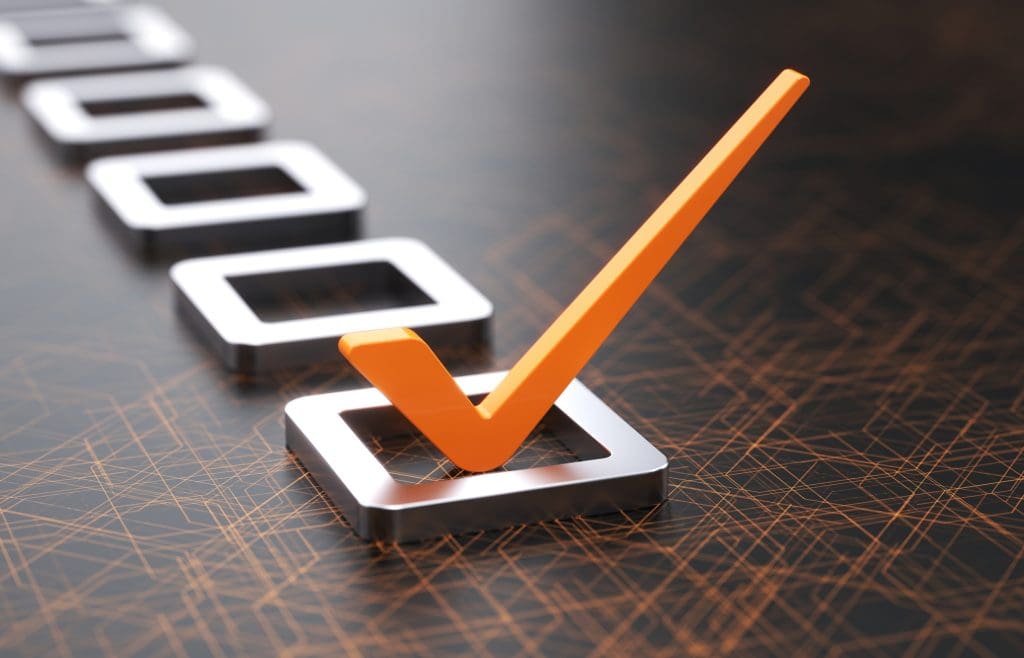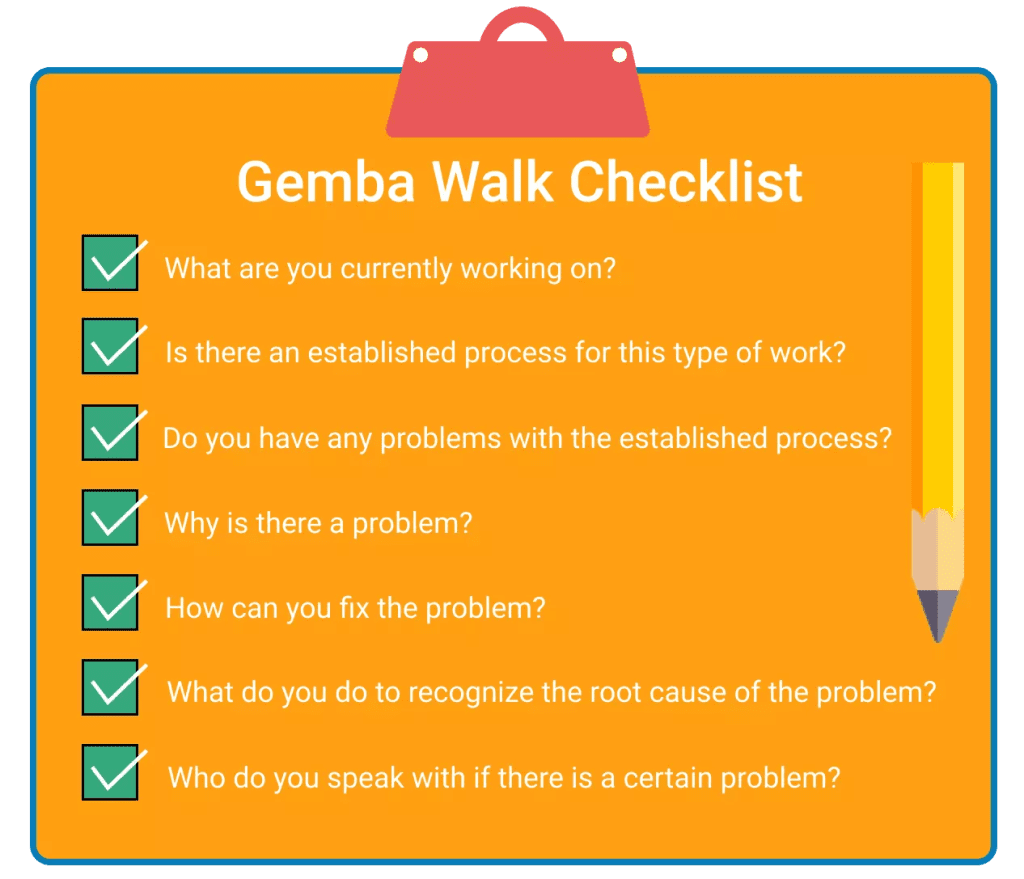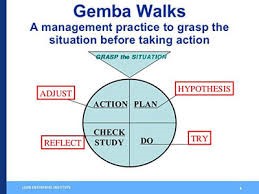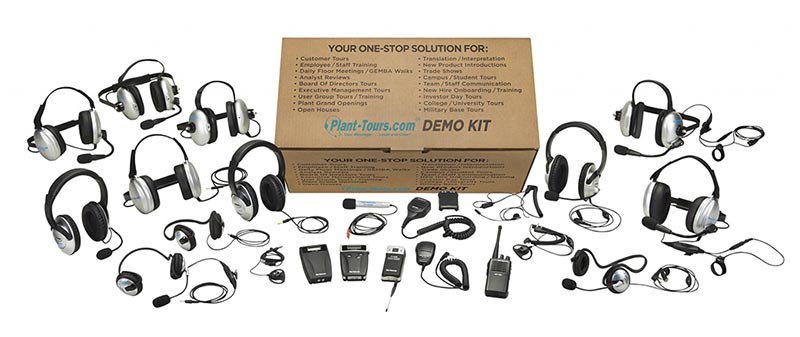What Is a Gemba Walk Checklist?
Gemba walks are considered one of the most important tools for lean manufacturing in a wide range of industries. A gemba walk allows managers and leaders to observe employees and processes on the factory floor to help make improvements, eliminate waste, and streamline workflows. The goal of this article, however, is to advance beyond the basic “what is” of the topic as it pertains to kaizen principles of problem-solving and process improvement. We’re here to help you construct an actual walk so that you can practice the implementation of these principles in your own business.
This all starts with a gemba walk checklist. Instead of just offering a short, line-item list bereft of the explanatory prose and nuance required to understand why you need to focus on certain aspects, let’s actually explain what’s happening here. Let’s walk through the fundamentals, the things you’re going to need, and the objectives.
Practicing an effective gemba walk on a regular basis helps you to grasp the root cause of any issue identified on your factory floor or the front lines of your manufacturing. You can use this as a tool for more efficient project management and to transform standard work into exemplary work. It all starts with the fundamentals of lean management.
Gemba Walk Fundamentals
Kaizen is the Japanese word for continuous improvement. Every business needs this to succeed, or else you’re just losing money and facing layoffs, downsizing, and even potentially losing your business. The rest of the industry never stops being competitive, so continually improving is the only way to succeed. The work process you get to witness firsthand via gemba walks becomes more to you than just something you operate; it acts more like a plant you’re growing. It requires your focus and nurturing to thrive.
The entire environment is crucial to examine, record, and analyze. Here are the key fundamentals of gemba, as it pertains to a successful business.
Go See for Yourself
Gemba translates to the “real place” in Japanese, and it means specifically to walk among the actual site where things are taking place. A factory floor, a shop floor, a warehouse, a large kitchen; any sort of business has a real place that can be visited. This is outside of your office or conference room, and it’s aside from and above expecting a floor manager to relay information about the business. To go and see means to be on the floor, observing, recording, speaking to employees, and truly understanding the innermost functions of your business. Remember, it’s a living, breathing organism, not some static prompt. Your entire checklist begins by understanding the purpose of gemba so that you can plan out where to visit and with whom to speak.
Go and Ask Why
To “ask” is metaphorical and literal here. With the actual scientific methodology used in kaizen and the Six Sigma principles, you are observing data and asking the question, “Why is X happening?” This, in a metaphorical sense, is you asking yourself how an issue arose and what can be done to change it. In the literal sense, you also want to speak to the people who are operating the manufacturing, distribution, etc., and specifically ask them questions. Why is X happening? What do you think can be done about Y? This isn’t a process of barking decrees about what you think is best. It is a process of discovery and fine-tuning the lean in a problem-solving sense, taking the best corrective action, not just any action. Visit workstations and inquire, examine the work process, see it with your own eyes. Then ask, “Why?”
Always Show Respect
Japanese culture has a very long and storied history of honor and dignity. The same holds true with this business theory. You want to show respect in multiple facets here. First, you need to show respect to the gemba walk itself, by planning accordingly, creating and going over your checklist, and never cutting any corners. You also want to be respectful of your environment and especially of your employees. You’re not out on your walk to be a hall monitor or to seek out employee infractions. You are observing the organism as it operates in its environment, and you want to observe and record observations, look for improvement opportunities, check for safety hazards, focus on your value stream, etc. Really focus on what’s happening in the work areas and look for inefficiencies, redundancies, dangers, etc.
Things You Need to Prepare for a Gemba Walk
We at Plant Tours want you to understand precisely what a gemba walk entails, but let’s get to the actual checklist you’re going to want to compile. If you need to learn more about the topic, we have other great articles on the topic. Here’s an 11-point checklist.
- Define a theme for your walk, as in which workstations or work areas you’ll be looking into, whether it’s an expense theme, or perhaps looking for safety hazards, and so on.
- Inform your employees of what’s happening. This isn’t a surprise visit. You want to observe and speak with them. They should understand beforehand that this isn’t necessarily some performance assessment to be held against them. They should feel comfortable in the process.
- Remember that you want to focus on the work process. There are other processes to focus on the people (employees). The gemba walk is about kaizen, improving your business processes. You want to check for improvement opportunities as they relate to the flow of your business. Toyota didn’t achieve success by purging employees but rather by observing the process and seeking their input and cooperation. They became team members, helping the company reach success.
- The next item on your checklist is the value stream of your business. There is actual value there, as you well know, and so you must follow the value from start to finish. See which department(s) add the most value and consider emulating what they’re doing for success for the other parts (streams) of your business.
- Always be sure to record observations so they can be analyzed properly later on. Photo, video, good notes; these are all ways to record what you’re observing. There’s a lot that you’re going to miss in real-time that you will likely be able to catch once you view the recorded data. Your team members need to do this as well.
- Be prepared to ask questions. One of the best ways to get answers on your shop floor (or anywhere else) is to ask your employees questions when you spot an issue, rather than relying solely on your data. They are experiencing this environment daily, and seeing it with your own eyes on a pass-through is nothing compared to collecting their input about what’s happening on the shop floor. Speak with them and don’t forget to follow up regularly.
- Don’t start making changes right away, even if you do observe things that need to be changed. You shouldn’t act in haste here. Part of showing respect to the process is to record this as part of your observations and to analyze it later on. You don’t want to burden your employees, and you don’t want to try to implement some spur-of-the-moment change without first going over it properly.
- Don’t forget that your gemba walk should be a team effort. This doesn’t have to include a lot of people, but it should be more people than just yourself. The more eyes the better. Plus, having other team members here allows more questions to be asked and more work areas to be observed without the walk having to consume the entire day of work. Your team members will be invaluable here.
- Change up your times and area of focus. Every Wednesday at 10 a.m. doesn’t do too much for Friday evening’s potential problems. This isn’t exactly the same as management by walking around (MBWA), so you definitely want to ensure that everyone does happen to know when you and the team will be walking. Though you also want a bit of variety and flexibility here.
- Next on the checklist, remember to create a time for speaking personally to your employees to get their feedback. You’ve already observed and asked your questions; now is the time to get their feedback. See what they’re feeling and what they think about things. Employees who do this job every day will often have fantastic suggestions about what can be done to improve production. A corrective action is profitable for your business processes, so it doesn’t have to come directly from you.
- Continue to do your walks, planning out the process and the theme and bringing your team every time. This isn’t a one-off proposition. Kaizen is to seek continuous improvement. For as long as you operate the business, you should be going on these gemba walks.
What Are the Objectives of a Gemba Walk?
Here is a quick list of some of the objectives you should be hoping to achieve with your gemba walks.
- Improving the productivity of your business
- Building trust with employees
- Making the workplace more efficient
- Improving kanban and KPI metrics through lean management
- Innovating your workflow
- Cutting your costs where possible
- Identifying and preventing safety hazards
- Improving on your service
Types of Questions to Ask During a Gemba Walk
In this gemba walk checklist question section, let’s go over some of the types of questions you should be asking.
- What sort of standard are we working toward?
- Is our standard or process clear?
- What is the ultimate goal?
- What can be done to improve the process in question?
- How can we eliminate these problems and implement corrective action?
- What sorts of problems are we running into?
- Why is (X) problem a challenge?
- What is the root cause?
- What is the next step in fixing this problem?
- Do we have everything needed to handle these issues?
- What would assist us in solving these problems?
- What can be improved today?
- What other questions should I ask?
Final Thoughts
From individual project management to wide-scale changes, it’s all only possible if you’re able to correctly identify the issues. A gemba walk is something that can definitely help you do this. By following the information we have laid out for you in our series of gemba walk articles, you should be able to create a team and start walking by planning your own kaizen event.









